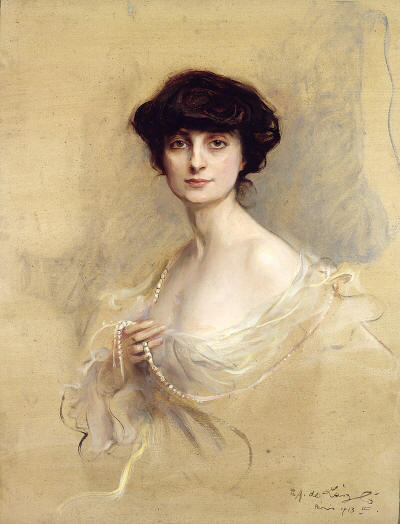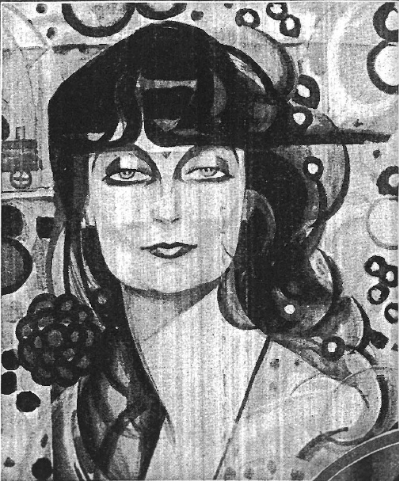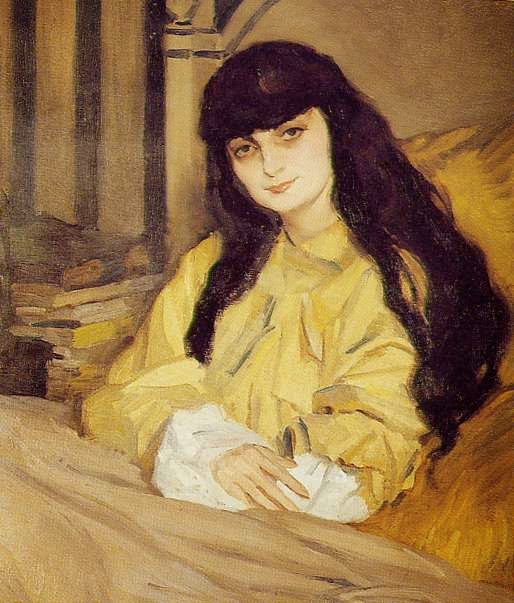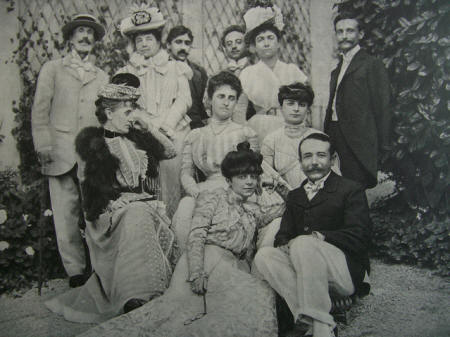

Queer Places:
Bassaraba, 74500 Publier, Francia
Père Lachaise Cemetery, 16 Rue du Repos, 75020 Paris, Francia
 Anna, Comtesse Mathieu de Noailles (15 November 1876 – 30 April 1933) was a
Romanian-French writer. The Comtesse de Noailles and
Edith Wharton counted
Jean Cocteau among their closest
friends; neither would have anything to do with
Natalie Barney or
Renée Vivien, the comtesse
once having remarked that she was not “interested in such people”. While it
may be true that the Comtesse de Noailles held such opinions in the early
years of her friendship with Wharton, she later explored lesbian relationships
herself and, with
Colette, was a regular at Natalie
Barney’s afternoons “for women only.”
Anna, Comtesse Mathieu de Noailles (15 November 1876 – 30 April 1933) was a
Romanian-French writer. The Comtesse de Noailles and
Edith Wharton counted
Jean Cocteau among their closest
friends; neither would have anything to do with
Natalie Barney or
Renée Vivien, the comtesse
once having remarked that she was not “interested in such people”. While it
may be true that the Comtesse de Noailles held such opinions in the early
years of her friendship with Wharton, she later explored lesbian relationships
herself and, with
Colette, was a regular at Natalie
Barney’s afternoons “for women only.”
Born Princess Anna Elisabeth Bibesco-Bassaraba de Brancovan in Paris, she was a descendant of the Bibescu and Craioveşti families of Romanian boyars. Her father was Prince Grégoire Bibesco-Bassaraba, a son of Wallachian Prince Gheorghe Bibesco and Zoe Mavrocordato-Bassaraba de Brancovan. Her Greek mother was the former Ralouka (Rachel) Mussurus, a musician, to whom the Polish composer Ignacy Paderewski dedicated several of his compositions. Via her mother, Anna de Noailles is a great-great-granddaughter of Sophronius of Vratsa, one of the leading figures of the Bulgarian National Revival, through his grandson Stefan Bogoridi, caimacam of Moldavia.[1] Her siblings were: Catherine Hélène Bibesco-Bassaraba de Brancovan and Constantine Bibesco-Bassaraba de Brancovan.
In 1897 she married Mathieu Fernand Frédéric Pascal de Noailles (1873–1942), the fourth son of the 7th Duke de Noailles. The couple soon became the toast of Parisian high society. They had one child, a son, Count Anne-Jules de Noailles (1900–1979).
Anna de Noailles wrote three novels, an autobiography, and many collections of poetry. She had friendly relations with the intellectual, literary and artistic elite of the day including Marcel Proust, Francis Jammes, Colette, André Gide, Frédéric Mistral, Robert de Montesquiou-Fezensac, Paul Valéry, Jean Cocteau, Pierre Loti, Paul Hervieu, and Max Jacob.

Anna, Comtesse Mathieu de Noailles, by Paul Thévenaz

Anna de Noailles, by Jean de Gaigneron, 1910

From left to right, standing: Prince Edmond de Polignac, Princess of Brancovan (Rakoul
(Rachel) Musurus), Marcel Proust, Prince Constantin Brancoveanu (brother of Anna de Noailles), and Léon Delafosse. 2nd row: Madame de Montgenard, Princesse de Polignac, Countess Anna de Noailles, 1st row: Princess Helen Caraman-Chimay (sister of Anna de Noailles), Abel Hermant
Anna de Noailles was an unconventional woman, one with whom the sometimes shy and socially stiff Edith Wharton assumed an immediate intimacy. By the time she met Wharton at tea in early April 1907, the comtesse had been honored by the French Academy for her poetry and was an accomplished novelist whose works examined the psychology of women in love.
Countess de Noailles served as a juror with Florence Meyer Blumenthal in awarding the Prix Blumenthal, a grant given between 1919-1954 to painters, sculptors, decorators, engravers, writers, and musicians.[3]
Anna de Noailles was the first woman to become a Commander of the Legion of Honor, the first woman to be received in the Royal Belgian Academy of French Language and Literature, and she was honored with the "Grand Prix" of the Académie Française in 1921.[2]
She died in 1933 in Paris, aged 56, and was interred in the Père Lachaise Cemetery. She was a cousin of Prince Antoine Bibesco and Princess Marthe Bibesco.
So popular was Anna de Noailles that various notable artists of the day painted her portrait, including Antonio de la Gandara, Ignacio Zuloaga, Kees van Dongen, Jacques Émile Blanche, and the British portrait painter Philip de László. In 1906 her image was sculpted by Auguste Rodin; the clay model can be seen today in the Musée Rodin in Paris, and the finished marble bust is on display in New York's Metropolitan Museum.
My published books: